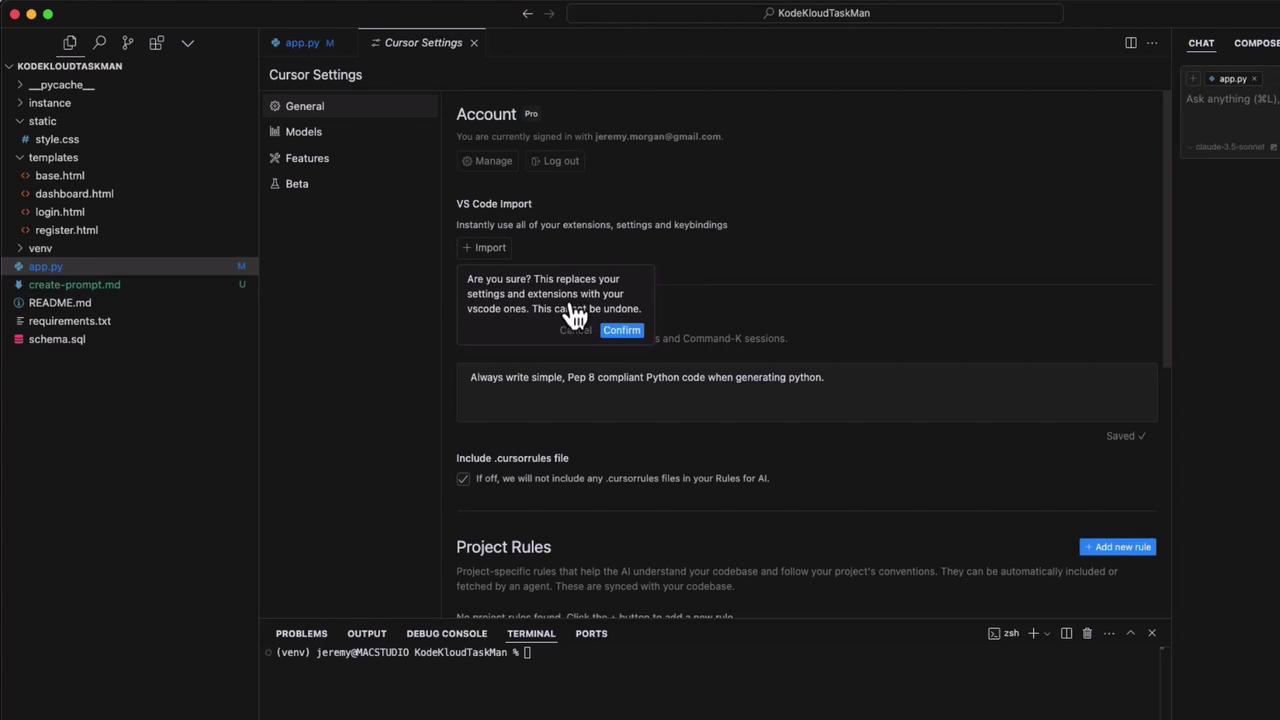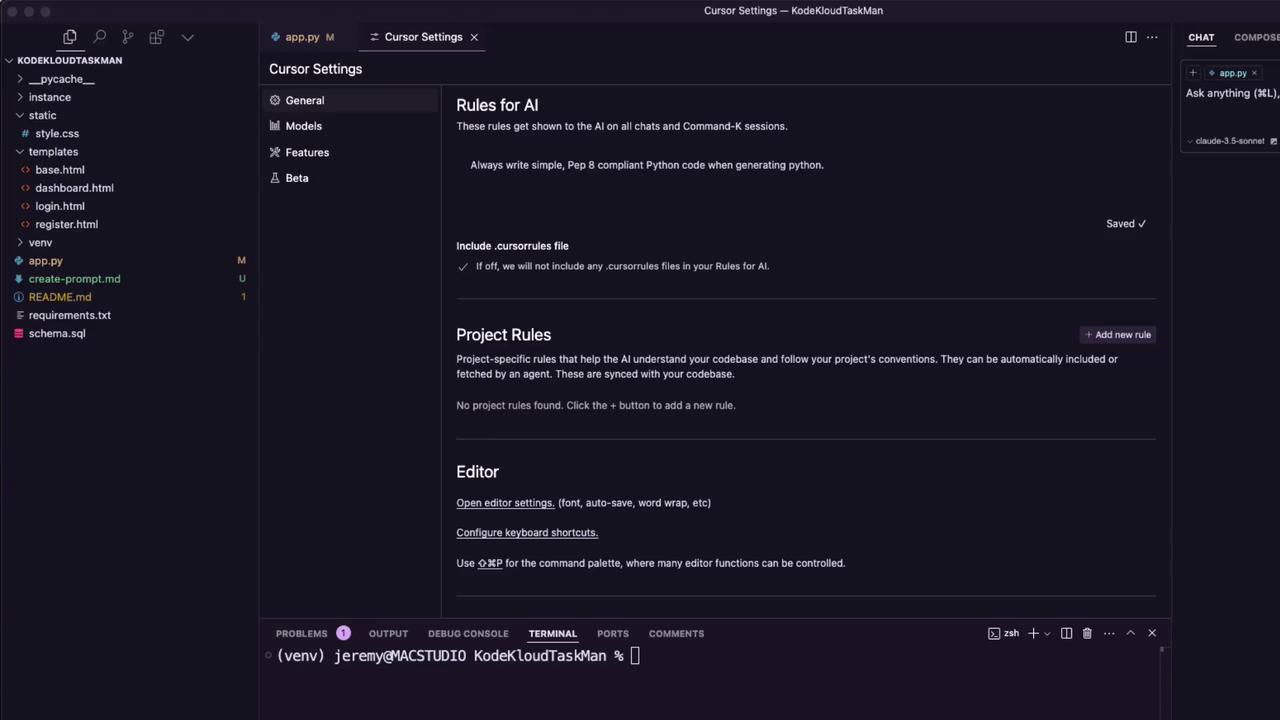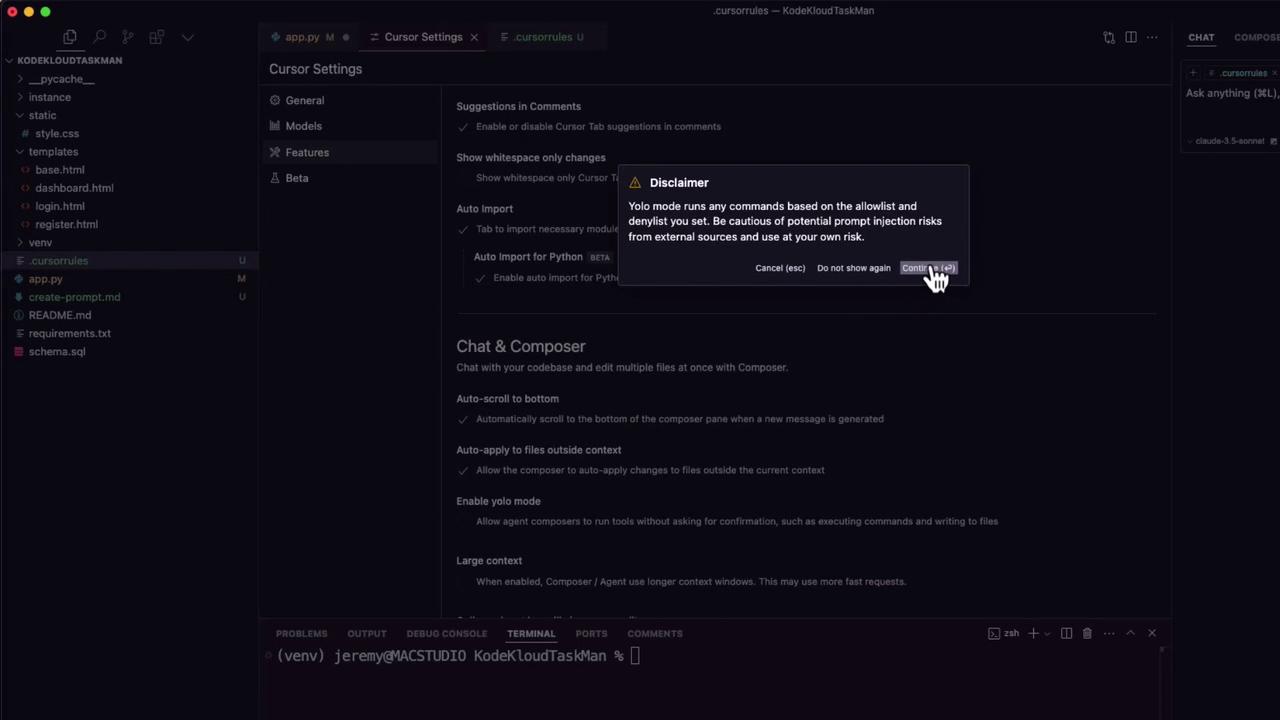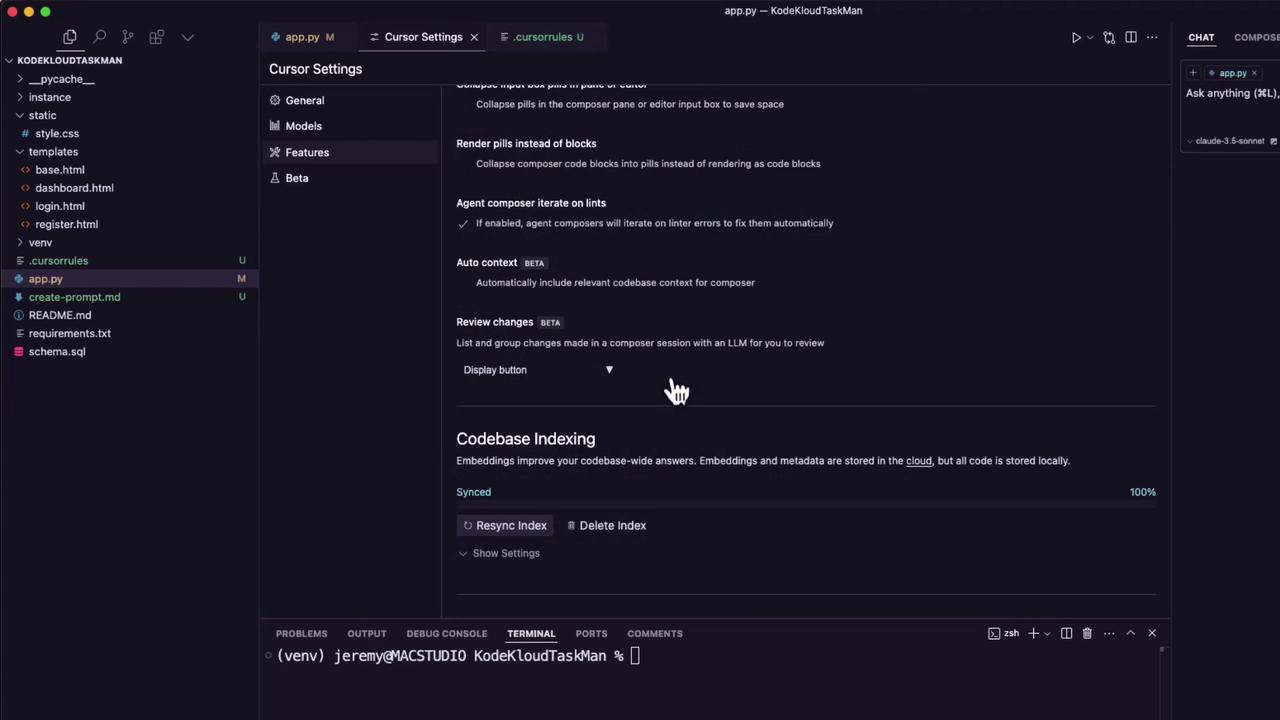Cursor AI
Mastering Autocompletion
Demo Auto Imports and Customizing Settings
In this lesson we explore Cursor IDE’s AI-powered autocompletion, Python auto-imports, and customizable settings. We’ll demonstrate how to streamline your Flask development workflow and tailor Cursor to your preferences.
Table of Contents
- Automatic Imports
- Quick Fix Menu
- Python Auto Import (Beta)
- Global & Project Settings
- Importing VS Code Configuration
- Defining .cursor-rules
- Feature Toggles
- AI Models & API Keys
- Enabling Beta Features
- Next Steps
Automatic Imports
Cursor leverages machine learning to detect missing Python modules and insert the corresponding imports. Consider this Flask example:
import sqlite3
import os
from flask import Flask, render_template, request, redirect, url_for, flash, session, g
from datetime import datetime
import hashlib
import logging
# Initialize Flask app
app = Flask(__name__)
app.config['SECRET_KEY'] = 'dev'
app.config['DATABASE'] = os.path.join(app.instance_path, 'task_manager.sqlite')
# Ensure instance folder exists and write to CSV
try:
os.makedirs(app.instance_path)
with open('file.csv', 'w') as f:
f.write('Hello, World!')
with open('file.csv', 'r') as f:
csvreader = csv.reader(f)
for row in csvreader:
print(row)
except OSError:
pass
Because csv is not imported, csv.reader will trigger a quick fix. Press ⌘. (macOS) or Ctrl+. (Windows/Linux), choose Import 'csv', and Cursor auto-inserts:
import csv
import sqlite3
import os
# ...other imports
Your application runs without ModuleNotFoundError.
Tip
Use the auto-import feature to speed up development and avoid manual import typos.
Quick Fix Menu
Beyond imports, the Quick Fix menu helps with:
- Renaming symbols
- Searching for import candidates
- Suppressing linter warnings
Navigate to suggested actions with Ctrl+. / ⌘..
Python Auto Import (Beta)
The Python auto-import (Beta) proactively adds necessary imports as you type. Example:
def read_csv(file_path):
with open(file_path, 'r') as f:
csvreader = csv.reader(f)
for row in csvreader:
print(row)
def write_csv(file_path, data):
with open(file_path, 'w') as f:
csvwriter = csv.writer(f)
csvwriter.writerows(data)
Press Tab inside the function, save the file, and watch import csv appear at the top.
Customizing Settings in Cursor
Access global settings with ⌘⇧J (macOS) or Ctrl+Shift+J (Windows/Linux). Here you can adjust AI rules, feature toggles, editor themes, and more.
Importing VS Code Settings
Mirror your VS Code preferences by importing your settings and extensions into Cursor.

After import, extensions like TabNine and your preferred theme sync automatically.
[2025-03-19 21:44:41.900] Extension version: 0.88.5
[2025-03-19 21:44:41.901] LLM bundle: none
[2025-03-19 21:44:41.901] WSL extension is supported only in Microsoft versions of VS Code
Project-Specific Cursor Rules
Define a .cursor-rules file at your project root to override global AI instructions. These per-project settings ensure consistent code style.

Example .cursor-rules:
# .cursor-rules
always generate Python code that is simple and PEP 8 compliant
Feature Toggles
Enable or disable Cursor IDE features according to your workflow:
| Feature | Description |
|---|---|
| Cursor predictions | Real-time code suggestions |
| Auto import for Python (Beta) | Automatic import insertion as you code |
| Partial accepts | Accept suggestions in segments |
| Show whitespace-only suggestions | Display whitespace completions |


Warning
Keep your API keys secure. Do not commit them to public repositories.
AI Models and API Keys
Under Models, select your preferred AI backend. To unlock premium capabilities, add API keys for:
- OpenAI
- Anthropic
- Google Cloud AI
- Azure AI


Beta Features
Join the cutting edge by toggling beta features for early access to new AI capabilities.

Next Steps
Now that you’ve configured Cursor’s auto-imports and personalized your IDE, proceed to explore advanced prompt engineering and delve deeper into Cursor’s AI-driven development workflow.
Links and References
Watch Video
Watch video content